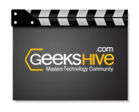| |
 In the 1990s, when Internet was only a technological curiosity and a category destined to college students and specialists, the founders of IAN Software Pathfinding began to develop one of the first online commerce management software. It was called GIT (Technological Information Management, by its Spanish initials). Their developers were convinced that it will bring truly innovative solutions to an evolving category: information technology. In the 1990s, when Internet was only a technological curiosity and a category destined to college students and specialists, the founders of IAN Software Pathfinding began to develop one of the first online commerce management software. It was called GIT (Technological Information Management, by its Spanish initials). Their developers were convinced that it will bring truly innovative solutions to an evolving category: information technology.
During those years, the sales of computer products and supplies were performed through traditional means. The first computers began to appear in stores of the main Argentinean cities or were distributed by small resellers who carried the novelty across new towns. GIT was developed in that context, based on a Reseller commercial scheme designed to be a management tool to solve the disadvantages of retail trade but also to bring new ways of thinking and treating the product. Over the years, as the market grew and technological options improved, the system began to seek more, becoming soon an effective solution to companies devoted to computer products and supplies marketing. At the beginning of 2007, it achieved global expansion meeting every need of a Miami wholesale distributer and a local wholesale distributer.
Its second version, based technologically and conceptually on Web2.0, becomes progressively an ERP and CRM gathered in an ideal solution to e-commerce management.
This vision of the model, certainly, guaranteed its applicability, higher performance and simple use on the part of the companies that decided to implement it. Therefore, thanks to an intelligent, revolutionary and flexible management model that faced challenges imposed by the local and international market, they could reach excellent results.
For its developers, the development of software with a wide range of services and benefits implied more than the possibility to offer a one-sided technological tool. Necessarily, its performance should be related to the necessity of transmitting use principles and certain corporate values (definite marketing and business visions). Those aspects, properly enabled, would ensure the best device performance in every variable. Because of that, Git 2.0 became much more than a widely accepted technological tool. Its spectrum turned it into a model of work and participation where wholesalers and specialist technicians could ally themselves and obtain great benefits reciprocally.
 Under a so-called GeeksHive trademark, the idea was a novelty: building the base for a corporate model about the services currently brought about by thousands of specialist all over the world, turning active participation of Geek citizens a real differential. Computer technicians, now involved in their specialty, can take advantage of an e-commerce tool that eases hundred transactions without effort, and without having to worry about the troublesome processes of sales which are not very pleasant for everyone. Under a so-called GeeksHive trademark, the idea was a novelty: building the base for a corporate model about the services currently brought about by thousands of specialist all over the world, turning active participation of Geek citizens a real differential. Computer technicians, now involved in their specialty, can take advantage of an e-commerce tool that eases hundred transactions without effort, and without having to worry about the troublesome processes of sales which are not very pleasant for everyone.
To that purpose, GeeksHive developed during 2008 its own Community Belonging and Participation Scale. Applicants and citizens as they compromise with the model and improve their scores can aspire to new promotion ladders within the organization which enables them to obtain greater professional leadership and commercial profitability. This opportunity is bound to a novel geocentric identification system and a reference chain.
Nowadays, GeeksHive is the most dynamic and innovative technological community model. There are no secrets: whenever a specialist technician and a product wholesaler are brought together to achieve new solutions and direct the market there is a business opportunity.
Since the 90s, GeeksHive´s developers are persuaded that corporate integration is the way.

Visit GeeksHive videos
|
|
